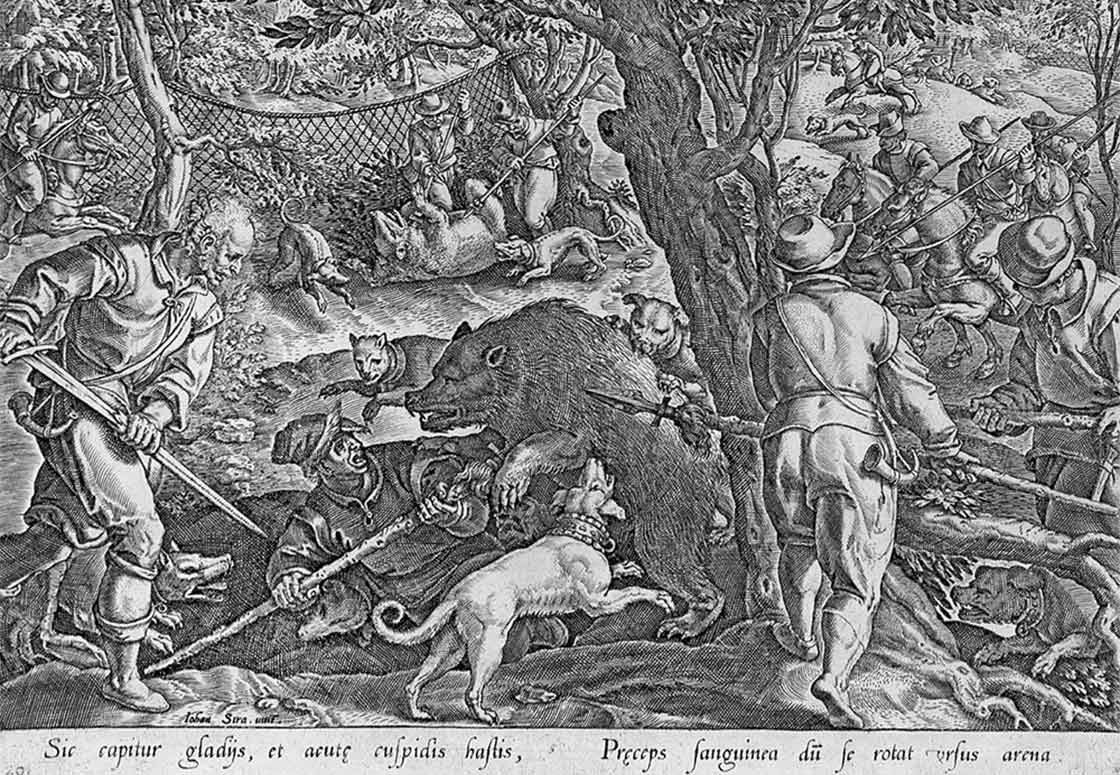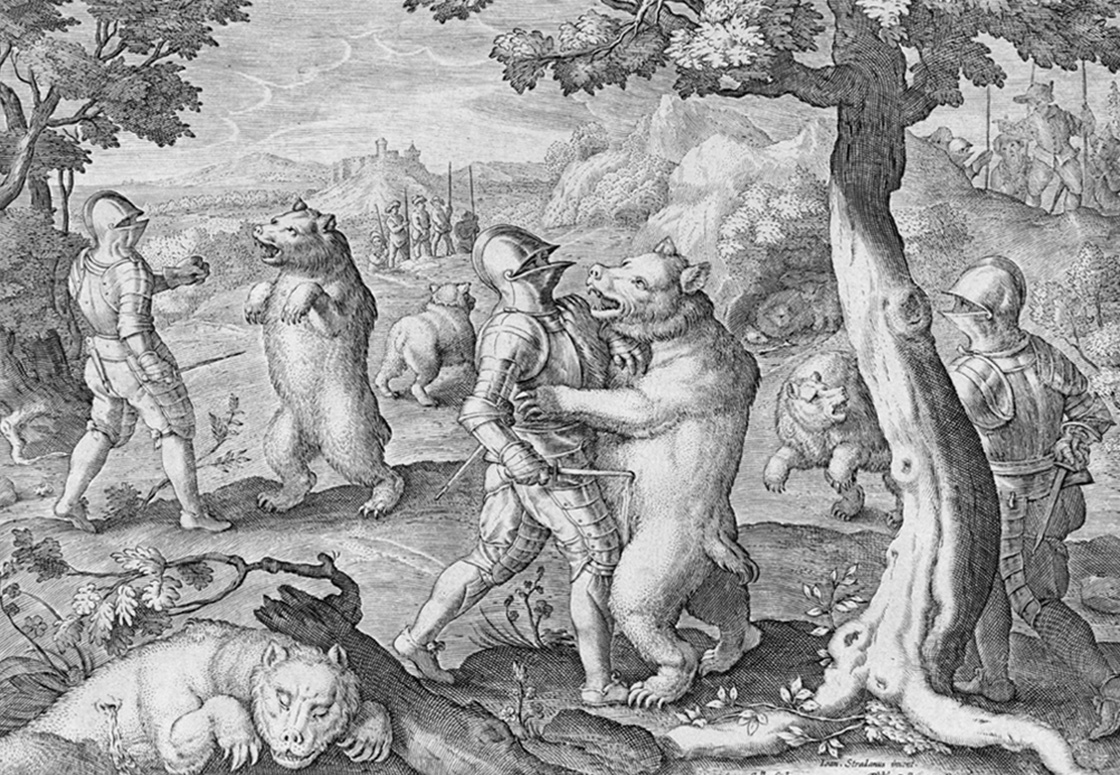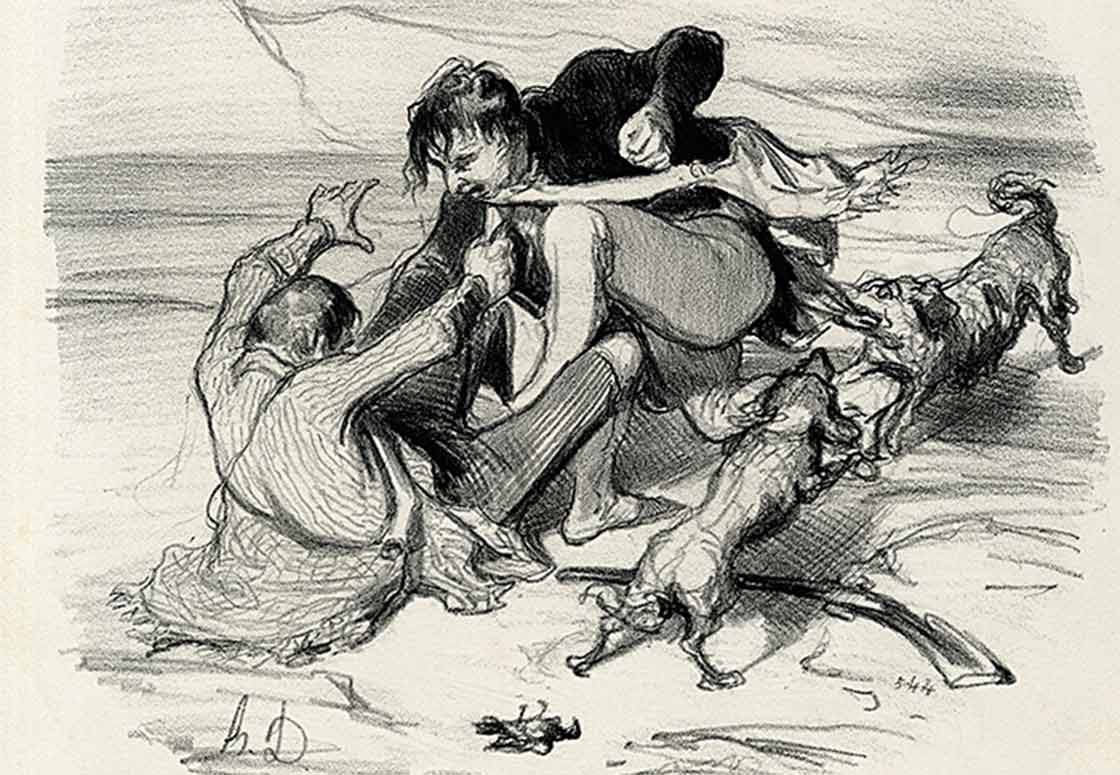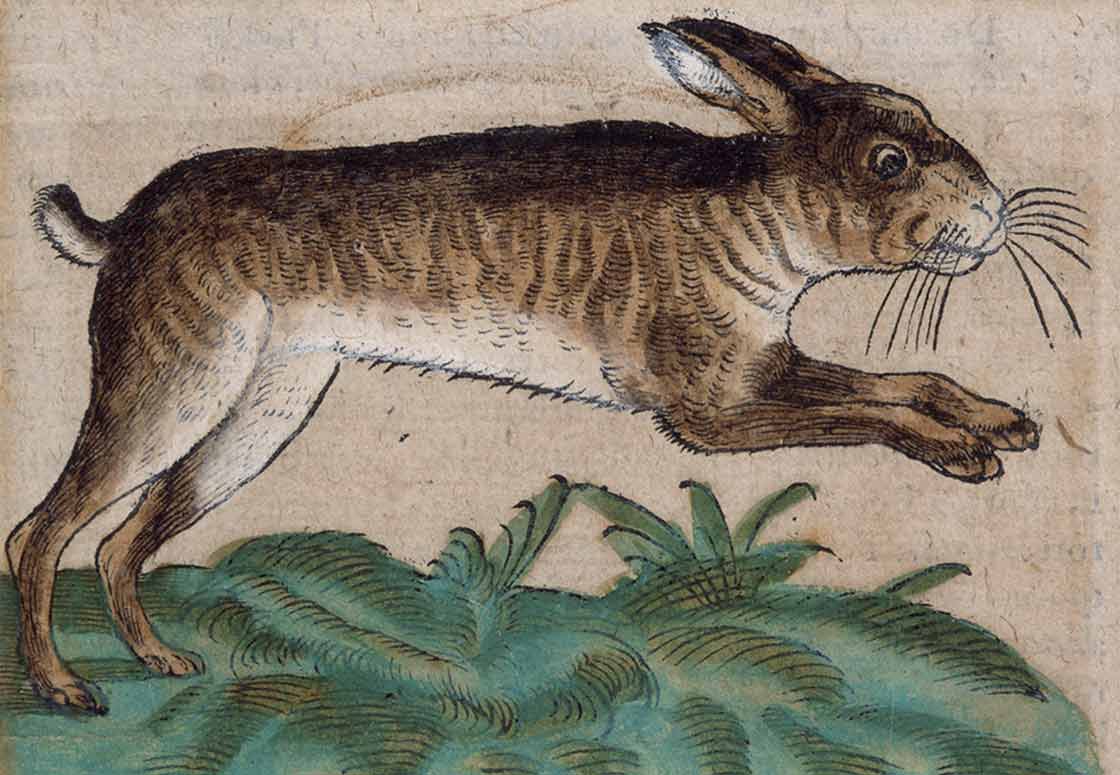Deer and fallow deer hunting
This engraving represents the killing of two deer (a fallow deer and a daguet or young stag) by a troop of hunters on foot or horseback. A legend in Latin is associated with it: "Thanks to the dogs, the stags [and fallow deer] are quickly tired through the open meadows; then they are struck with the pointed iron of the spears. "The work bears witness to a hunting method that was in vogue during the Middle Ages and the Renaissance.
The "houraillement" consists of a large hunt conducted on foot with the help of "hourets" dogs in order to drive the game towards an enclosure within which the game is drawn. The engraving is based on the composition of an artist from Bruges, Jan Van der Straet, known as Stradanus. For the Medici's wall hangings, he drew - in great detail - the hunting and fishing methods that were popular in his time. The hunts feature the pursuit of European animals (bears, rabbits, partridges...), exotic animals (leopards, elephants, monkeys...),
but also fantastic (dragons, satyrs, aquatic monsters...). The work of Stradanus is included in a collection entitled Venationes ferarum avium piscium, whose first edition - dedicated to Como de Medici - was published by Philippe Galle (Antwerp) in 1578. Popularized by engraving and taken up by Antonio Tempesta (1555-1630), the models of Stradanus constitute an important iconographic repertoire. They will know a great posterity, in particular near the weavers, earthenware manufacturers and porcelain manufacturers.






